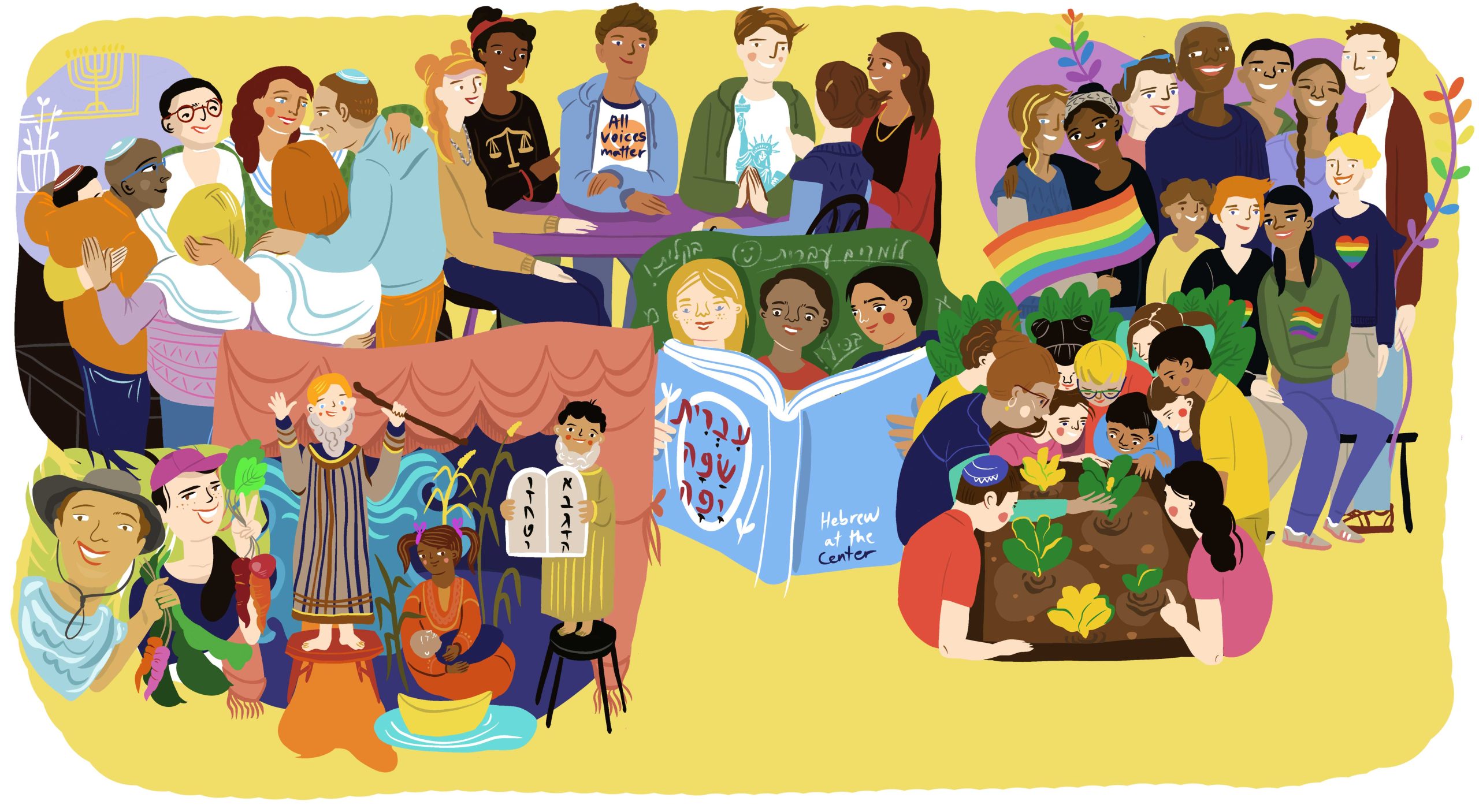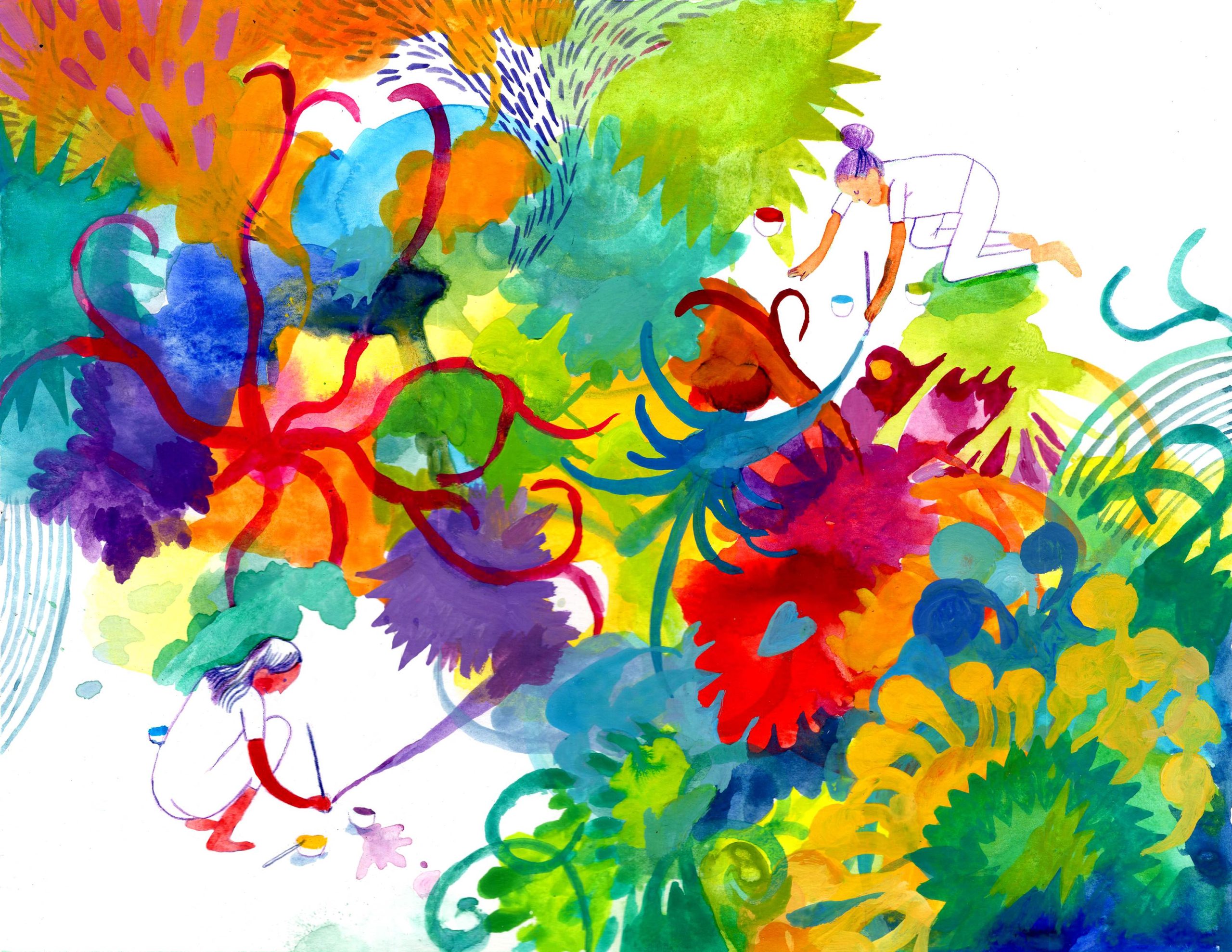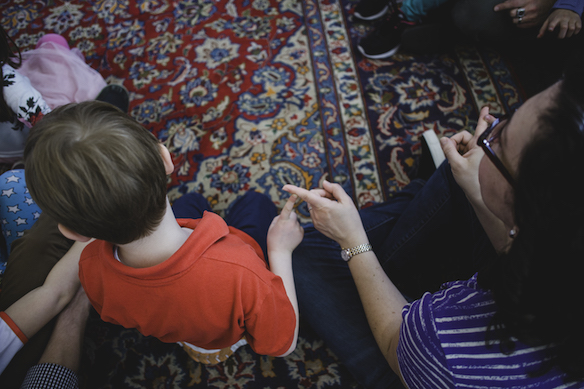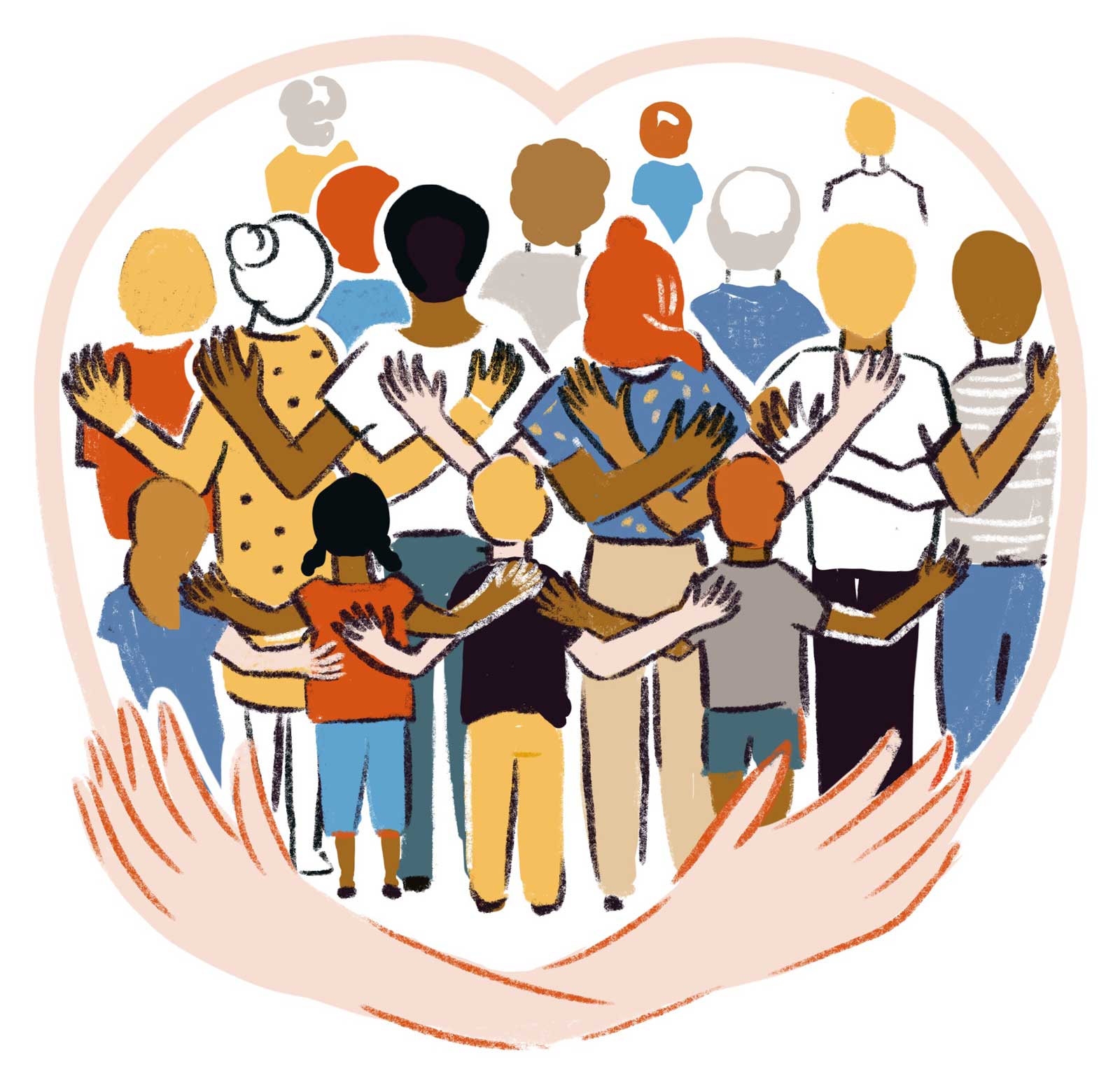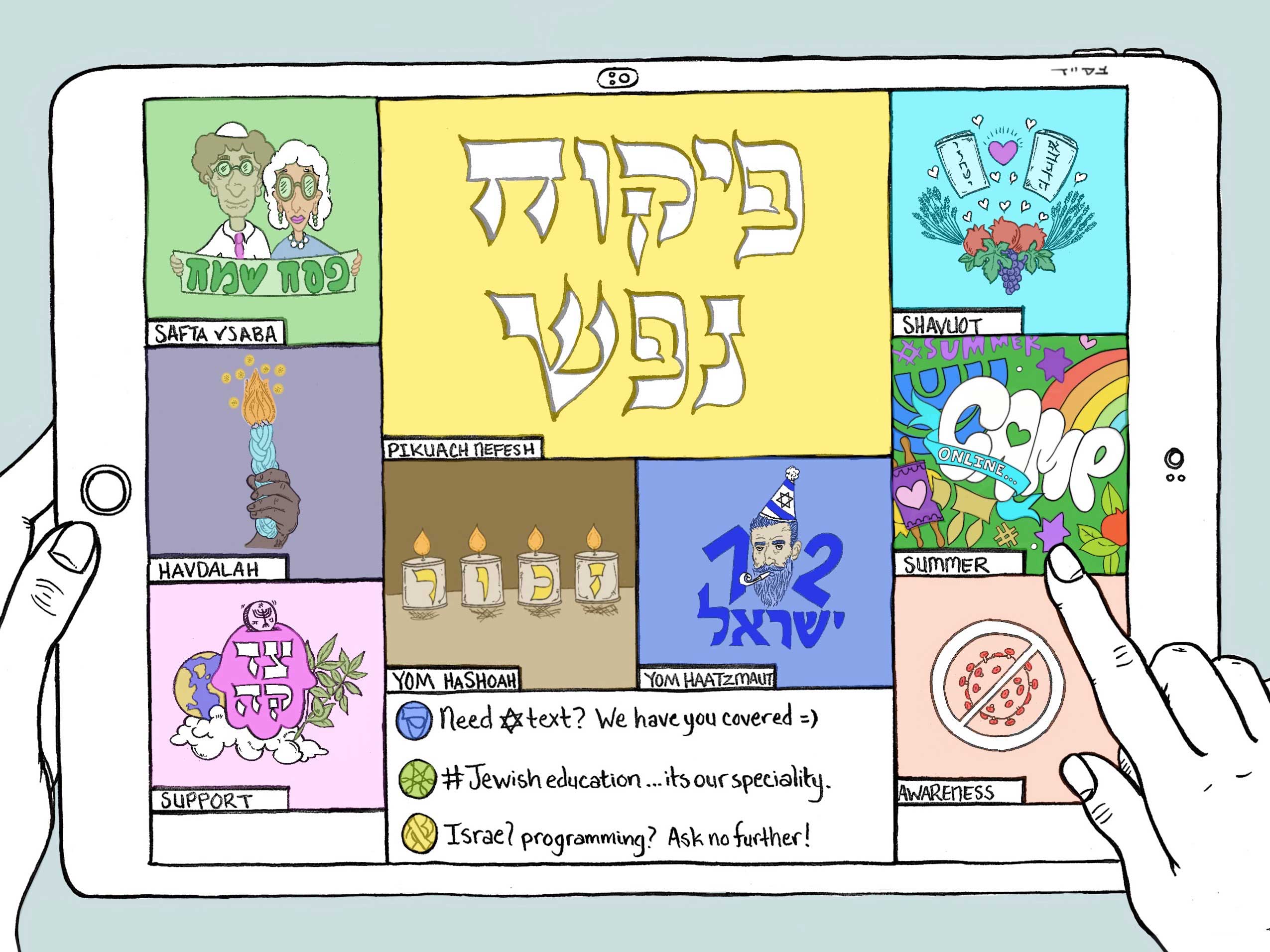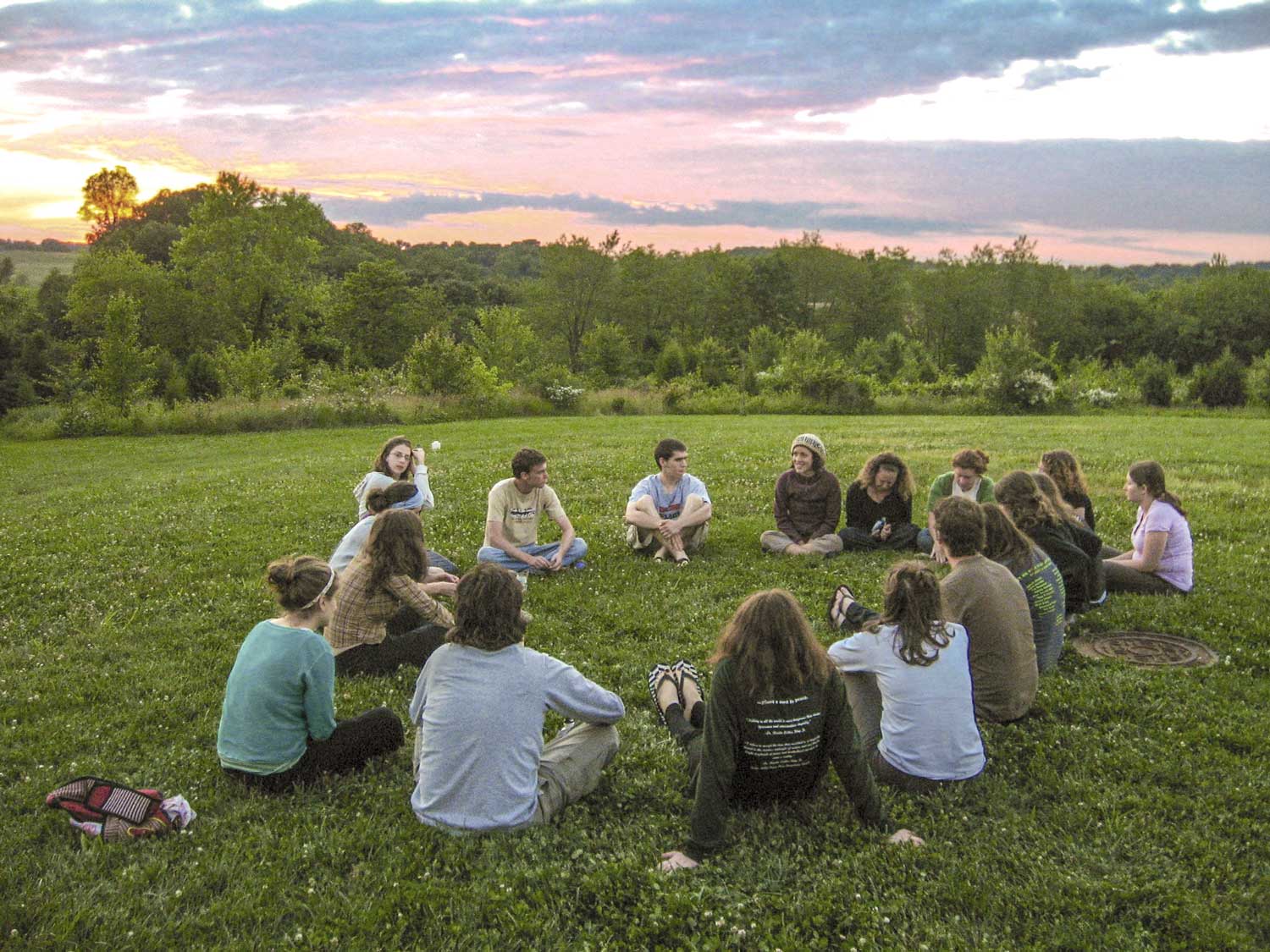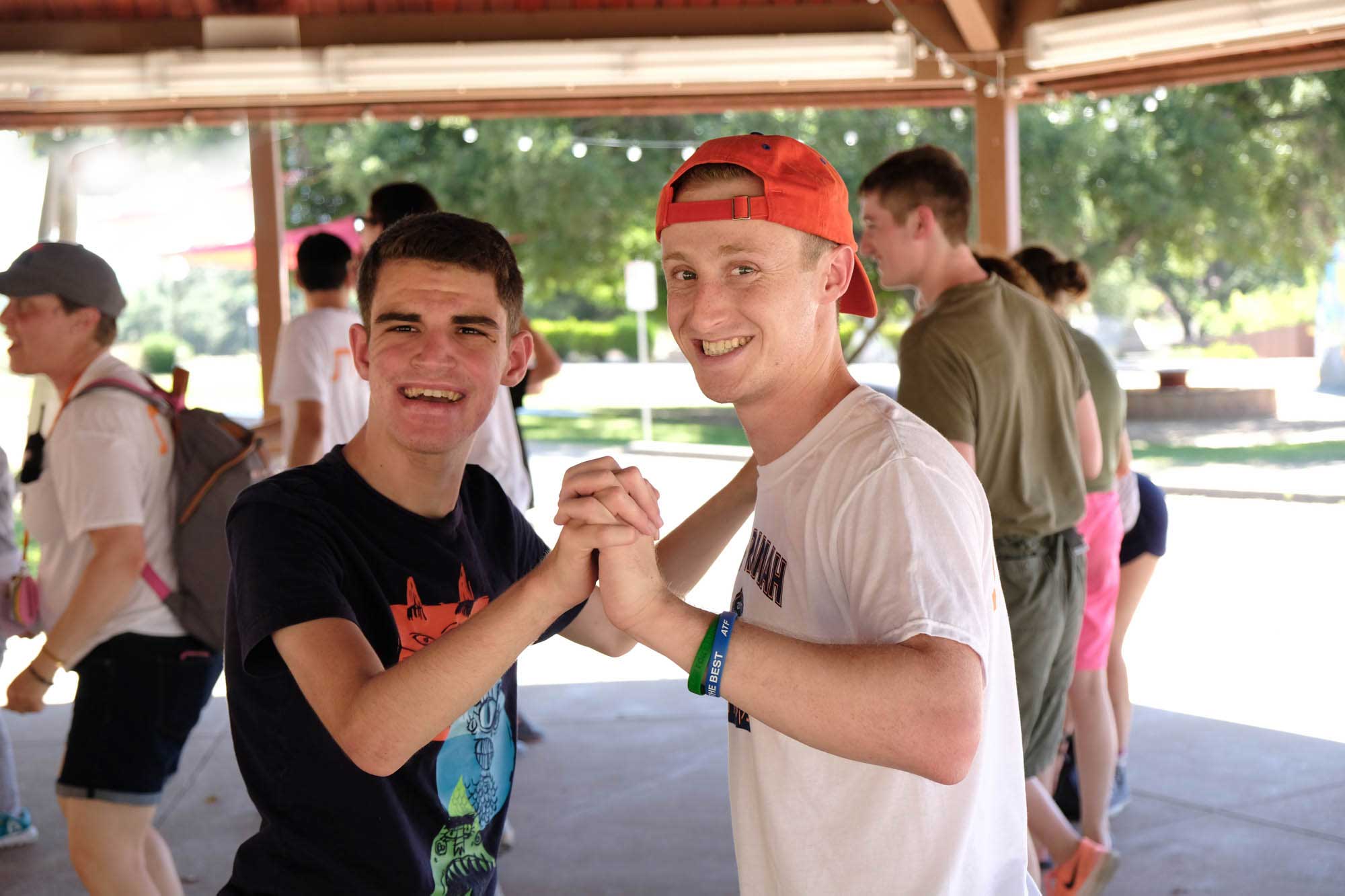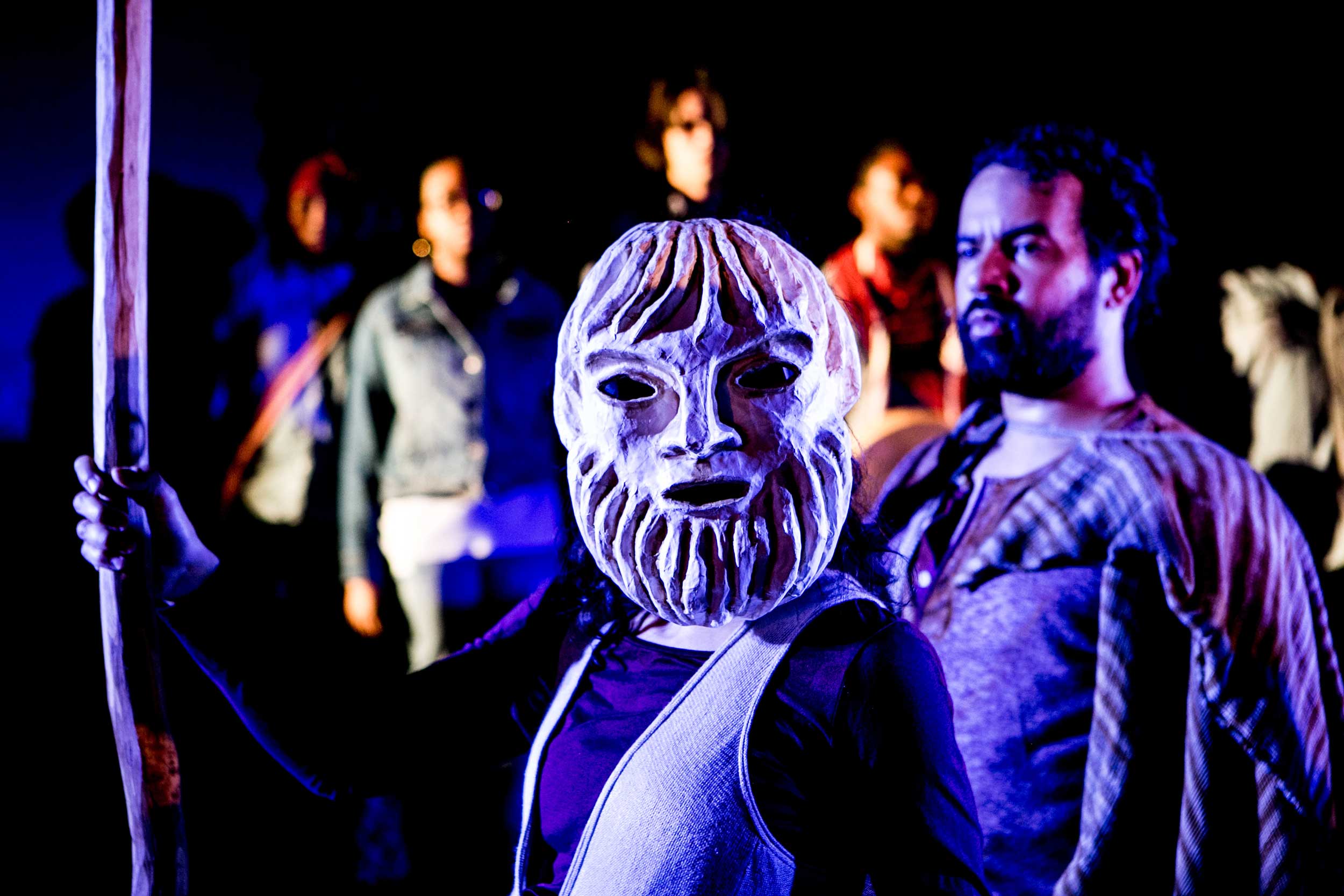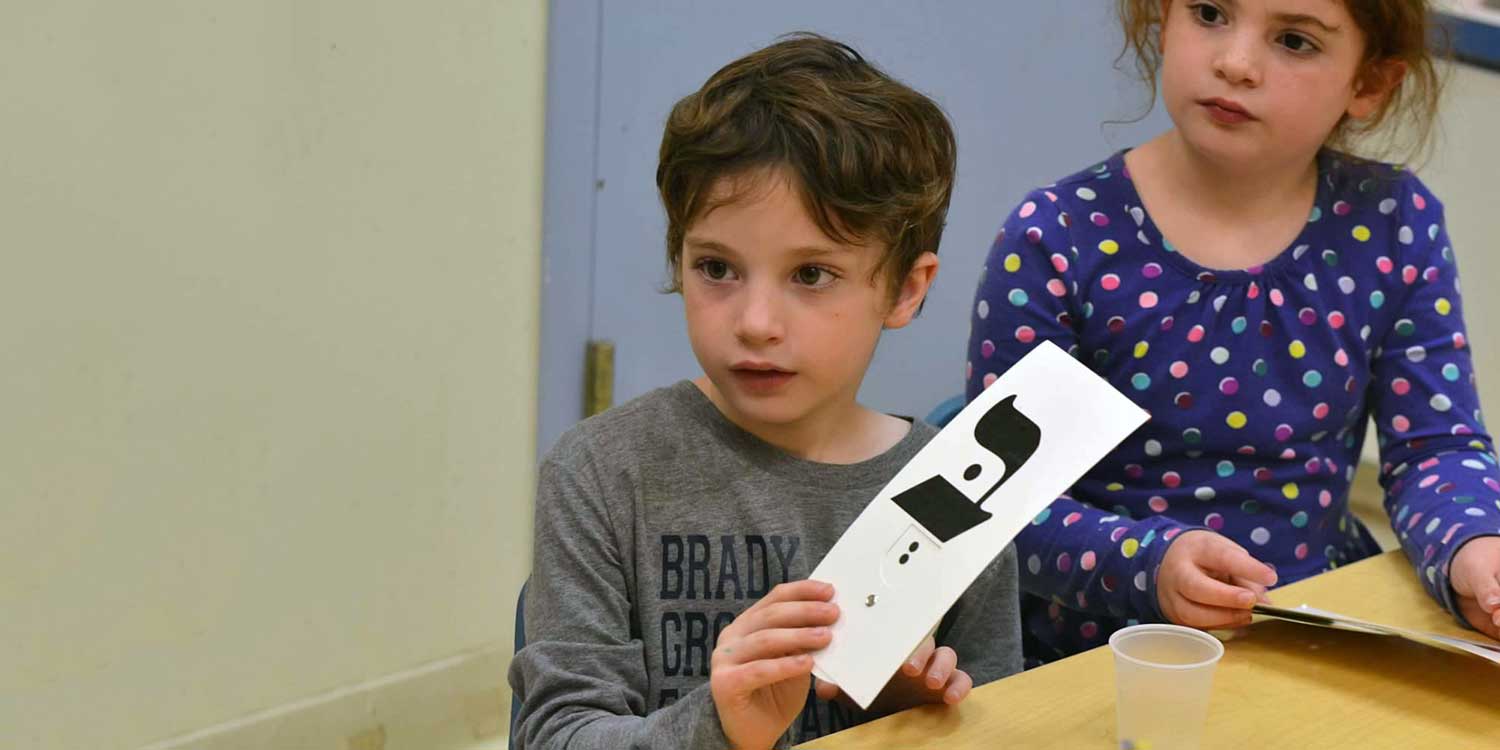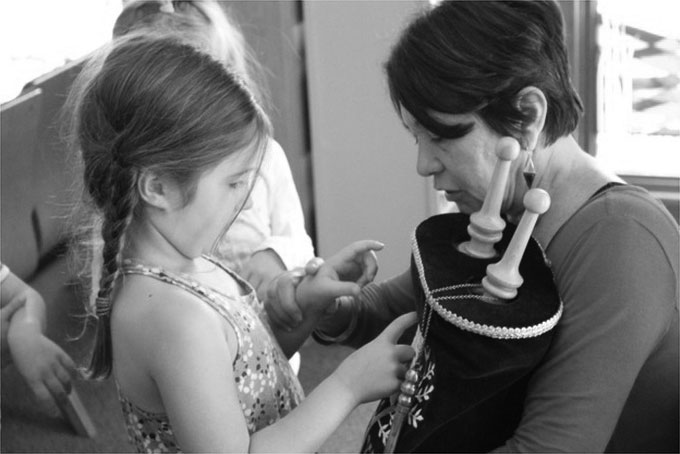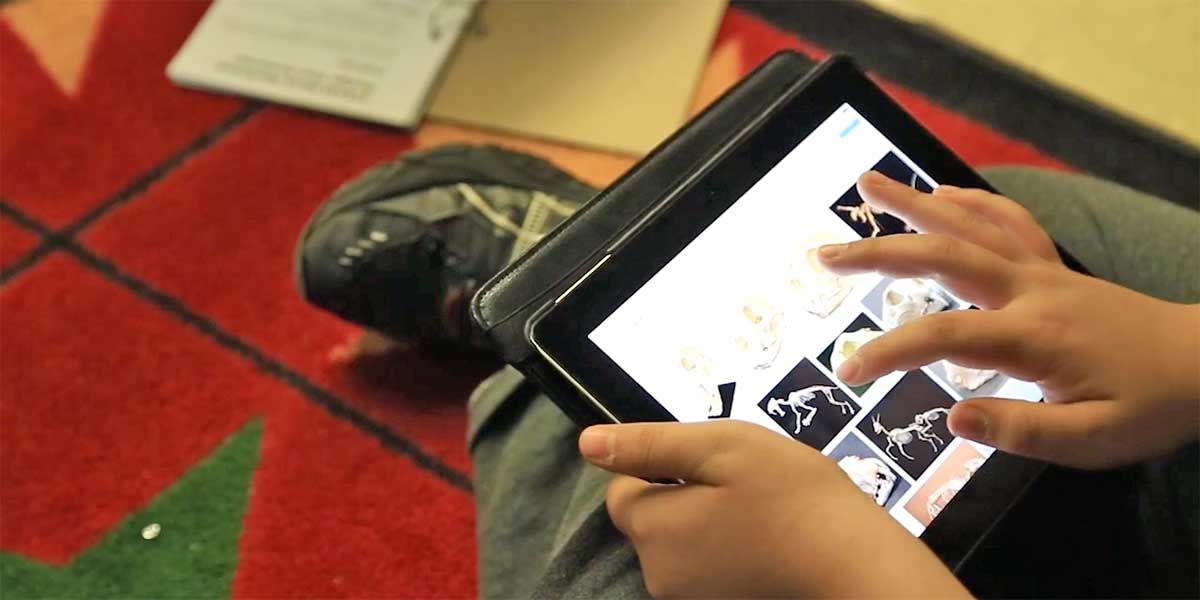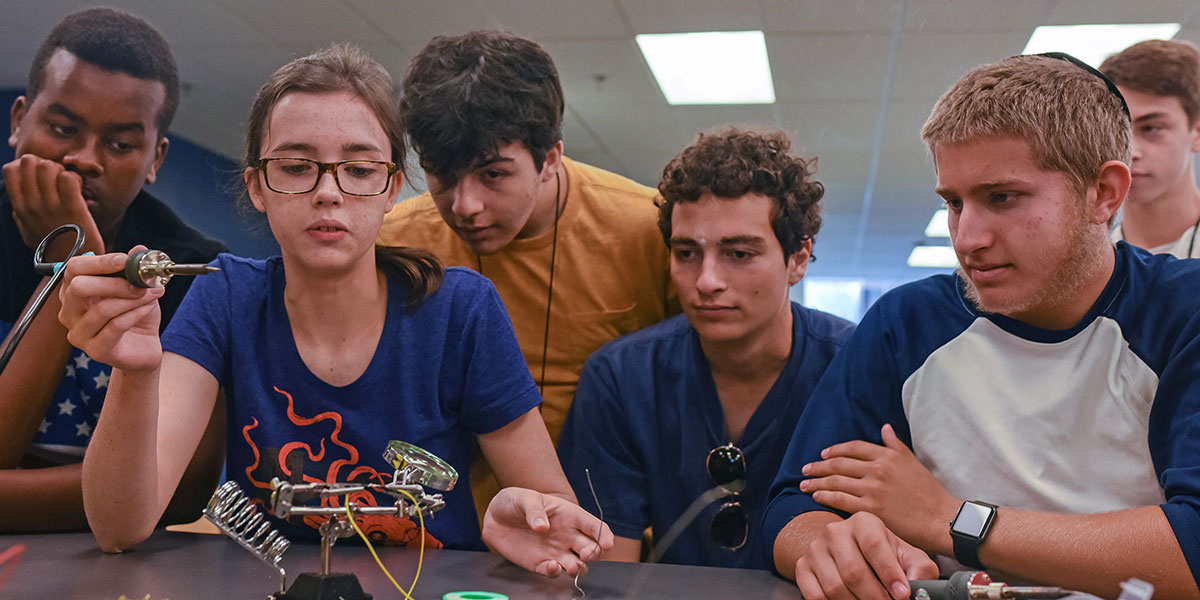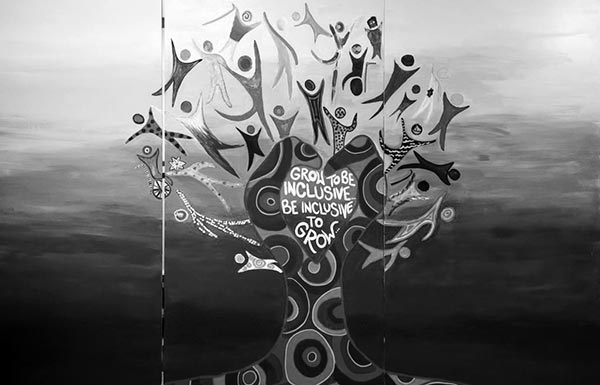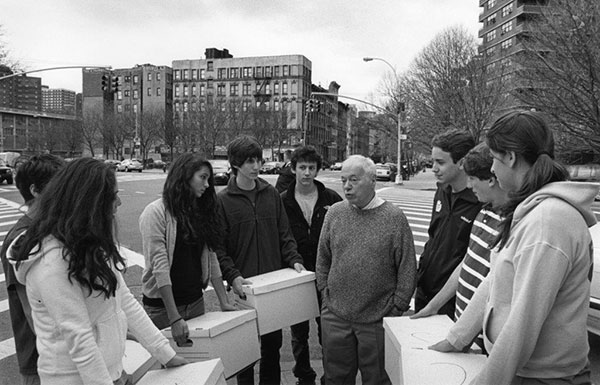
ARTICLE Think Outside the Brain: A Conversation with Annie Murphy Paul
Science writer and researcher Annie Murphy Paul recently published The Extended Mind: The Power of Thinking Outside the Brain, which explores how we can move beyond the traditional modes of thinking, and begin to explore other aspects to the thinking process, like movement and gesture.
At a time when we’re ready to break away from screens and gather once again, this conversation offers ideas for how we can begin to incorporate some of the most basic aspects of our innately social nature into our thinking, to the betterment of our teaching, our learning, and our living.
In the prologue to this book, you write that you’ve never encountered an idea “that changed so much” about how you work and live. In what ways did thinking ‘outside’ the brain change your life and work?
Before doing the research and reporting for The Extended Mind, I was very much what philosopher Andy Clark calls a “brainbound” person. That is: someone who lives a lot in her head, who sees the brain as the place where thinking happens, who believes that the way to best and maybe only way to work well is to sit still and labor with one's brain until the task is done.
In the process of writing the book, I came to see how limited that perspective is. I was really persuaded by the studies I read showing that bodily movement and gesture, spending time outside, arranging our workspaces in particular ways, engaging in social interactions with other people—all of these things can make our thinking better, and in fact actually partially constitute the thinking process. I began to think in terms of using these “extra-neural” resources in a more intentional, and hopefully skillful, way.
In practical terms, this has meant regularly performing a body-scan meditation, so that I can better tune in to my internal signals and cues (a capacity known as “enteroception”); giving myself permission to gesture freely, and paying more attention to other people’s gestures; and incorporating brief movement breaks into my workday, instead of saving physical activity for an end-of-day workout. It has meant making time to get outside, and even to gaze out the window for a few minutes when I’m not able to get outdoors; rearranging my home office so that it features “cues of identity” and “cues of belonging”; and trying to offload the contents of my brain onto physical space whenever possible (I’ve become big fan of Post-It Notes). And it has meant exchanging my solitary writer ways for more social activity—whether that’s meeting my writers’ group, a walk-and-talk with a friend, or a fitness class, where I can engage in synchronized movement.
I really have come to feel that my previous emphasis on the brain as the sole locus of thinking was way too limiting.
In Chapter 8, Thinking with Peers, you write about how teaching is a “deeply social act” and that teaching can initiate a set of processes in the brain that ultimately change the way a teacher thinks. Can you share more about this idea?
In our culture, we tend to treat social life, on the one hand, and mental or intellectual life, on the other, as separate and almost opposed. We think it’s OK for students to be social when they are in the lunchroom or on the playground, but then we want them to set that aside when it’s time to do “real” academic work.
The thing is, human beings are social all the time. We have these powerful social brains that are always operating, always on, and so what we want to do is harness a social brain and the service of learning and working. One of the most effective ways to do this is to teach someone else.
Anyone who has taught knows that you learn more about a subject by teaching it than by having someone teach it to you. There are a bunch of reasons for this. One is that we tend to review the material more intensively and organize it more thoroughly in our own minds when we know that we’re going to be teaching it to someone else. While we’re actually doing the teaching, we experience a state of physiological arousal that enhances our own learning. The fact that we’re interacting with another person generates a state of energized alertness that sharpens our attention and reinforces our memory, much more so than simply sitting alone and reviewing the same material. Also, when we’re explaining material to someone else, the gaps in our own knowledge become more visible. When we draw connections for the person that we're teaching, that leads us to engage in a deeper level of mental processing for ourselves. And, finally, when we play the role of teacher, we adopt what’s known as a metacognitive stance towards the material, because we’re keeping track of what the student knows and what we ourselves know. This leads us to develop a deeper and more sophisticated understanding of the material.
In that same chapter, you write about using stories to enhance our thinking, and you use an example of how students who were taught material through the form of a story, understood that material more accurately. How is this concept related to “thinking with peers” and more broadly, thinking beyond our normal pathways?
The act of storytelling is related to “thinking with peers“ because, when we humans are with our peers, we so readily and automatically put information into the form of stories. Cognitive scientists refer to stories as “psychologically privileged,” meaning that stories are granted special treatment by our brains.
Compared to other formats, we attend to stories more closely, we understand them more readily, and we remember them more accurately. The problem in many schools and workplaces is that we drain information of the vitality that a story naturally imparts. Instead of telling stories, we reduce information to dry lists or abstract points. The very same information would hold so much more interest for those receiving it if it were put in the form of a story. Likewise, people share information with each other in the form of stories when they are left to their own devices.
In some ways, the best thing for teachers and managers to do is to get out of the way of people and their storytelling impulse; as long as space and time is provided for people to talk with one another informally, they will tell each other stories. And stories are full of the kind of tacit, situated detail that really helps people learn their way around a new situation or a new subject.
Sitting around exchanging stories is not wasting time! It’s actually the best way to bring classmates or coworkers up to speed on what’s going on.
I’m interested in how educators can apply the idea of Thinking in Groups to their work. In particular, in Chapter 9, you write about how “when we are carried along by the social eddy, cooperation with others feels smooth, almost effortless.” Can you share more about this idea of synchronicity with our readers, and how it can apply to education?
One of the big lessons that I came away from after doing research and reporting for this book is that human beings are really animals. We are not computers. Many of the mechanisms by which we form ourselves into groups are primitive and visceral and biological. One of these is synchronous movement. When we move in the same way at the same time as other people, it has the effect of blurring the boundaries between self and other. We feel more positively towards others, and cooperate more easily with them, once we have engaged in synchronous movement with them.
The same is true for having a strong emotional experience in the same place at the same time as other people, or engaging in rituals with people in the same place at the same time. All of these things are challenging to do while we’re still grappling with the limitations of a pandemic, but I think the research supports the idea that the more we can interact with each other in person, face-to-face, the more we can generate the benefits of a group mind, or what psychologists call “collective intelligence.” Certainly teachers and school leaders have lots of opportunities to create shared experiences among students that make them feel part of a larger entity.
How can we understand all of the learnings of your research, through the lens of the pandemic?
There’s no doubt that COVID has made it harder for us to access some of the mental extensions that help us think better, such as in-person interaction, or travel to new and stimulating places. At the same time, I think the limitations imposed by the pandemic have opened our eyes to just how important these mental extensions are.
Many of us have spent the past two years as brains in front of screens—not moving our bodies all that much, not leaving the house very often, not interacting with other people in person—and we can feel the negative effects of these changes on our thinking processes. The pandemic has reminded us that we are more than brains on legs; we have bodies, we’re embedded in physical spaces, and we’re woven into a web of social relationships.
I think the pandemic, awful as it is, offers us an opportunity to rethink our school and work practices in a way that makes them richer and more in tune with our nature as human beings.
What else would you like to add to this conversation?
One thing that really struck me as I was writing The Extended Mind was a concept that I came to call “extension inequality.” If we come to understand the process of thinking as a process of assembling bits and pieces from our environment, then it becomes obvious that the raw materials available in our environment really matter.
Are people in a given situation free to move their bodies? Do they have access to green spaces and the outdoors? Do they have a sense of ownership and control over the interior spaces in which they learn and work? In those spaces, do they see cues around them that remind them of their own identities and of their membership in valued groups? Do they have relationships with skilled teachers, motivated peers, caring mentors?
All of these things really matter for how well people can think; all of these things determine, in a sense, how intelligent they're able to be. This is a very different perspective from the conventional view that says that intelligence is a lump of stuff, fixed in size, sealed inside each individual’s head.
Once we recognize that we are, actually, “creatures of the world,” as philosophers Andy Clark and David Chalmers put it, then the imperative to improve our world, and to make the distribution of mental extensions more equitable, becomes impossible to ignore.
ANNIE MURPHY PAUL is an acclaimed science writer whose work has appeared in the New York Times Magazine, Scientific American, and The Best American Science Writing, among many other publications. Her latest book is The Extended Mind: The Power of Thinking Outside the Brain. Published in June of 2021, it was selected as Amazon Editors' Pick for Best Nonfiction; as one of 50 Notable Works of Nonfiction by the Washington Post; and as one of 100 Notable Books by the New York Times. She is the author of Origins, also named by the New York Times as a “Notable Book,” and The Cult of Personality, hailed by Malcolm Gladwell in the New Yorker as a “fascinating new book.” Her TED Talk has been viewed more than 2.6 million times. Paul is a recipient of the Rosalynn Carter Mental Health Journalism Fellowship, the Spencer Education Journalism Fellowship, and the Bernard L. Schwartz Fellowship at New America. A graduate of Yale University and Columbia University Graduate School of Journalism, she is currently a Learning Sciences Exchange Fellow at New America.
By Adina Kay-Gross, for The Covenant Foundation

